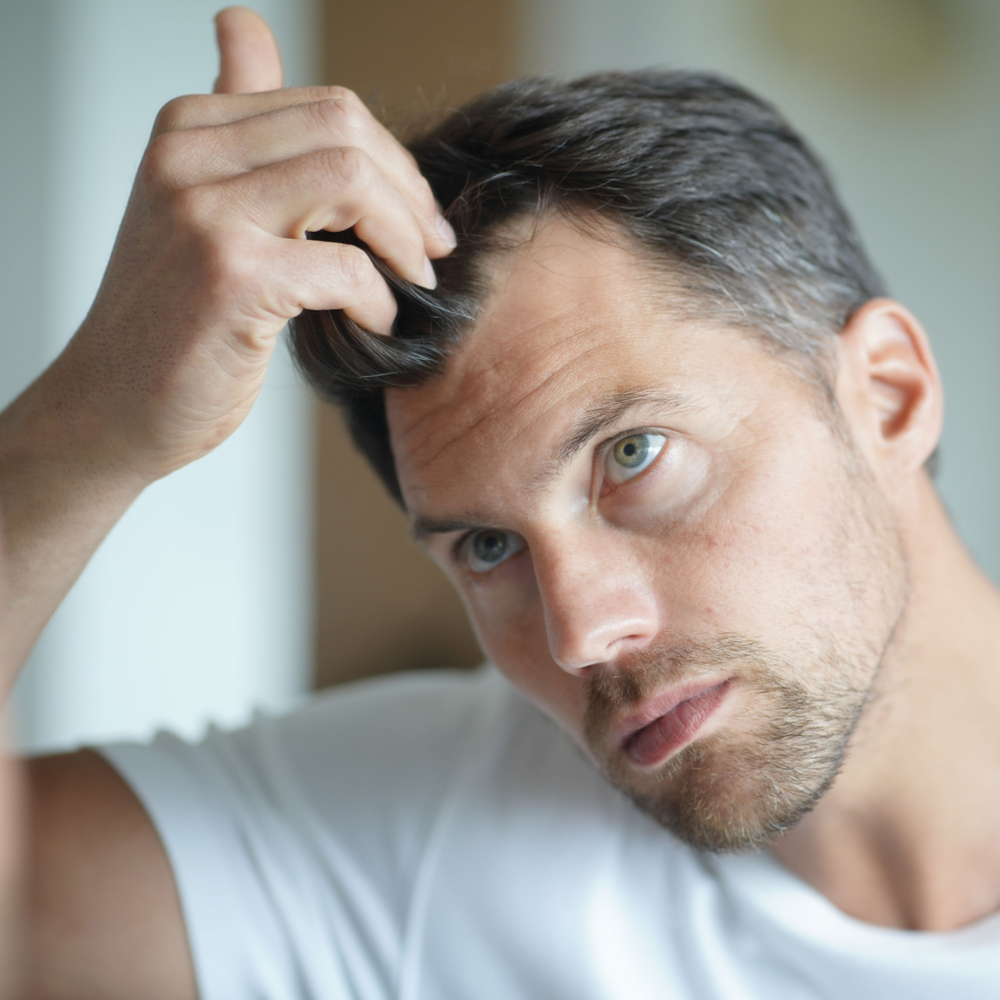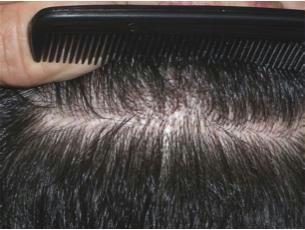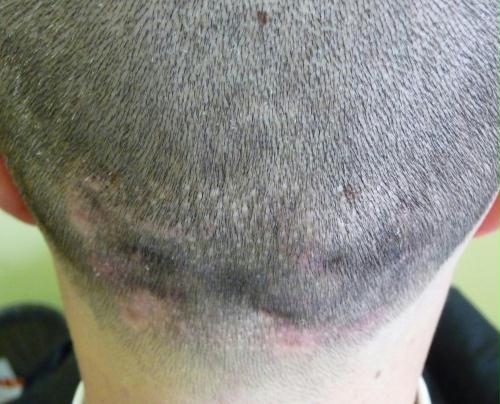alopécia por estresse ou psicogênica
A alopécia psicogênica é um tipo de alopécia relacionada ao estresse: essa conexão, embora ainda não tenha sido explicada cientificamente, é bem conhecida na experiência de quem lida com o problema.

Scientific collaboration between Professor Marco Toscani and Dr. Pasquale Fino, Chair of Plastic, Reconstructive and Aesthetic Surgery, Umberto I Health Center – “Sapienza” University of Rome
Cures and surgery for baldness are related to the degree of hair loss, type of situation around the donation area and the patient’s expectations. Thus, no surgical treatment is guaranteed to work for all situations.
Two avant-garde techniques are available: F.U.T. And F.U.E.
Cures and surgery for baldness are related to the degree of hair loss, type of situation around the donation area and the patient’s expectations. Thus, no surgical treatment is guaranteed to work for all situations.
Two avant-garde techniques are available: F.U.T. And F.U.E.
The F.U.T. (Follicular Unit Transplantation) autotransplant makes use of a sample of a strip of scalp taken from the occipital region, the ideal donation area because it is not subject to hormonal influences that facilitate hair loss.
The donation area is sutured using a particular technique which, by respecting the angle of hair growth, leaves a very thin linear scar (around 1-2 mm) that is easily disguised and often cannot even be found (aesthetic scar).
As soon as the strip of scalp is taken, it is “processed” by highly specialized personnel who divide the sample into thousands of follicular units of 1, 2, 3 or 4 bulbs, with the aid of optical stereomicroscopes.
The grafts thus obtained are then counted and aligned according to their size and passed on to the surgeon, who will then carry out the transplant in the designated micro-incisions made in the receiving area.
The F.U.E. (Follicular Unit Extraction) technique is a method listed as minimally invasive hair thickening, because it does not require the use of strips of scalp taken from the nuchal region; The downside is that, in order to apply the F.U.E., it is necessary to cut hair down to the root and this is often not readily accepted, especially by women.
Moreover, as it is slower than the F.U.T., this technique has the disadvantage of not allowing a large number of grafts per unit of time. The F.U.E. Technique leaves punctiform scars that may be noticeable solely under careful observation. Follicular units are extracted from the donation area (occipital or parietal) with a special 0.8/0.9/1.0 mm instrument, via a minimally traumatizing technique. The open holes generated for the hair follicle extraction by the micro scalpels close up by themselves in a few days and do not require stitches, resulting in thousands of off-white one millimetre micro-scars in the donation area.


The follicles are immediately transplanted to the receiving area, via special transplant instruments. The F.U.E. is particularly recommended for patients with hair loss in small areas or limited aesthetic regions such as the eyebrows, eyelashes and moustache; patients with insufficient scalp elasticity for strip excisions; patients that tend to suffer from the forming of large, thick or keloid scars; or when the body or beard serve as donation areas. The F.U.T. and F.U.E. techniques may be combined to some extent, in order to increase the capacity of the donation area and allow for the extraction of more grafts.
The operations are conducted in an operating room under local anaesthesia plus a mild sedation performed by an anaesthesiologist who will be present throughout all stages of the operation, thus allowing the patient to face the procedure as calmly as possible.
At the end of the operation, the patient will have neither head wraps nor bandages, will be welcomed by in a comfortable recovery room and may go home as soon as he/she receives permission from the anaesthesiologist.
The next day, a shampoo will be performed by specialized personnel, all the grafts will be checked and directions and instructions will be provided concerning cleaning treatments to be performed at home.
After approximately 12 days, the stitches in the donation area will be removed by the surgeon.
The transplanted hair will begin to crop up after around 3 months, and will grow approximately 1 cm per month; after 6-8 months the hair will have grown by 80%. After a year, the patient will be able to enjoy the final result.
Alternatives to surgery are medical drug therapies and vitamin supplements that slow and block hair loss, and the P.R.G.F. (plasma rich growth factor) or P.R.P.H.T. technique that uses the growth factors present in blood platelets of the patient, which, are immediately injected into the scalp after they have been activated, and will stimulate the stem cells present in the miniature or resting bulbs to produce thicker and stronger hair.
A alopécia psicogênica é um tipo de alopécia relacionada ao estresse: essa conexão, embora ainda não tenha sido explicada cientificamente, é bem conhecida na experiência de quem lida com o problema.
Brittle hair is hair that appears opaque and without shininess. It is characterized by glaringly visible damage and deterioration of the shaft.
The causes that lead to the problem of brittle hair may be of endogenous and exogenous origin.
Some parameters and characteristics should be taken into consideration when assessing hair types and morphologies: shape, density and appearance. The appearance of hair, in the form of lanugo, occurs during the fourth month of pregnancy.
Seborrheic dermatitis is a very common scalp condition characterized by the presence of yellow and oily flakes on the skin.
It is associated with erythema, small scaly, and intense itching.
Seborrheic dermatitis is a well-known condition but is still not easily identifiable. Many men and women starting from puberty have oily, greasy, shiny and thickened skin with large hair follicles, especially noticeable around the nose and mouth, forehead, torso, scalp (affected by so-called oily dandruff).
Trichotillomania is a type of hair loss due to voluntary pulling by the patient which often ends up breaking the hair shaft. In general, the patient twists the hair around a finger.
The gesture is occasional when going to sleep or concentrating on a task, but may become repetitive or obsessive.
The sebaceous glands are glands that secrete sebum, an oily, acidic substance with a pH of 3.5. They are connected laterally to the hair follicle. Sebaceous glands are found with a density of approximately 100/cm2 throughout all areas of the skin. In the human body, they are located across the entire surface of the skin, except for the palms of the hands and the soles of the feet.
Nossos especialistas te ajudarão a encontrar o tratamento mais adequado às suas exigências.
Agende uma consulta com nossos especialistas e conheça todos os tratamentos CRLAB.
Nossos especialistas estão prontos para encontrar a solução ideal para você.
NOSSAS SOLUÇÕES CRLAB, especialistas no bem-estar dos cabelos e do couro cabeludo
O método mais eficaz no combate à calvície. Recupera os cabelos de modo espesso e natural, o que permite ao paciente recuperar a sua aparência original. Uma solução patenteada que integra cabelos virgens naturais nas regiões atingidas por falhas de fios e pela calvície: um sistema completamente personalizado que garante funcionalidade e
uma aparência natural.